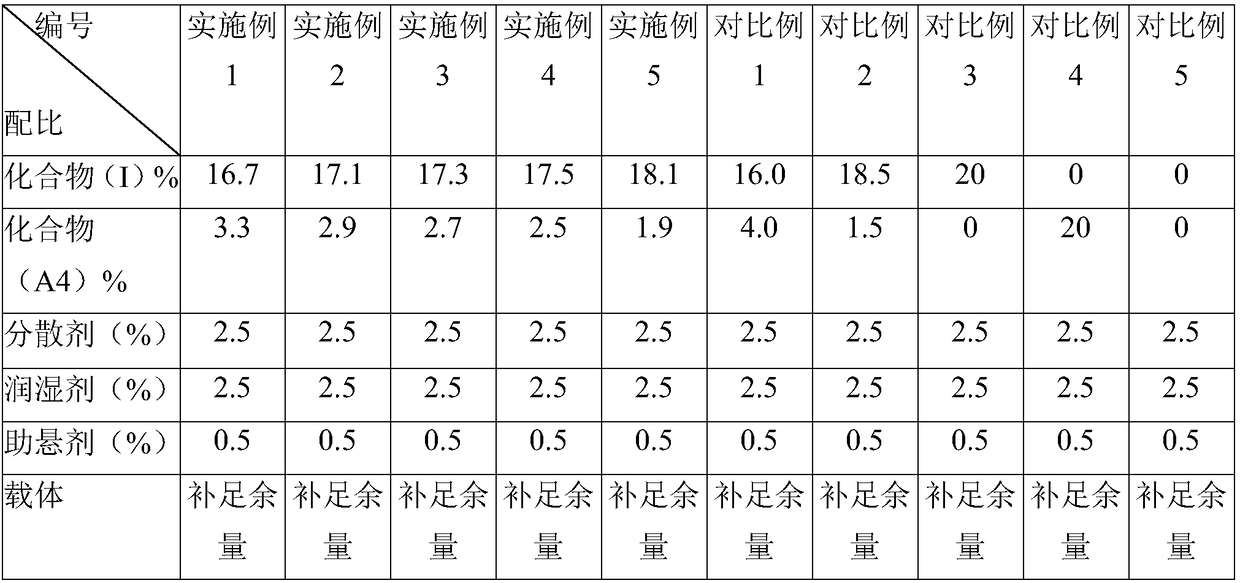Compound plant bactericide for preventing rice bacterial leaf blight
A technology of rice bacterial blight and plant fungicides, applied in the direction of fungicides, plant growth regulators, biocides, etc., can solve the problem of low treatment protection and passivation, large usage, and tobacco mosaic virus control effect Bad question
- Summary
- Abstract
- Description
- Claims
- Application Information
AI Technical Summary
Problems solved by technology
Method used
Image
Examples
Embodiment Construction
[0015] A compound plant fungicide for preventing and treating rice bacterial blight provided by the invention is prepared as a wettable powder and consists of compound (I), compound (A4) and auxiliary materials. The formulations of the composition are shown in Examples 1 to 5 in the table below, and Comparative Examples 1 to 5 are prepared simultaneously (the percentages shown in the table are the mass percentages of the total mass of the composition, excluding moisture):
[0016]
[0017] The compounding method of described composition is:
[0018] 1) Compound (I) and compound (A4) are pulverized separately,
[0019] 2) Mix the dispersing agent, wetting agent, and suspending agent, grind and pulverize, add the compound (I) powder and compound (A4) powder obtained in step 1), and then add the carrier to fully mix and pass through a 200-mesh sieve; Wettable powder (moisture content <1%).
[0020] The carrier is diatomite and talcum powder with a weight ratio of 100:1, the ...
PUM
 Login to View More
Login to View More Abstract
Description
Claims
Application Information
 Login to View More
Login to View More - R&D
- Intellectual Property
- Life Sciences
- Materials
- Tech Scout
- Unparalleled Data Quality
- Higher Quality Content
- 60% Fewer Hallucinations
Browse by: Latest US Patents, China's latest patents, Technical Efficacy Thesaurus, Application Domain, Technology Topic, Popular Technical Reports.
© 2025 PatSnap. All rights reserved.Legal|Privacy policy|Modern Slavery Act Transparency Statement|Sitemap|About US| Contact US: help@patsnap.com


